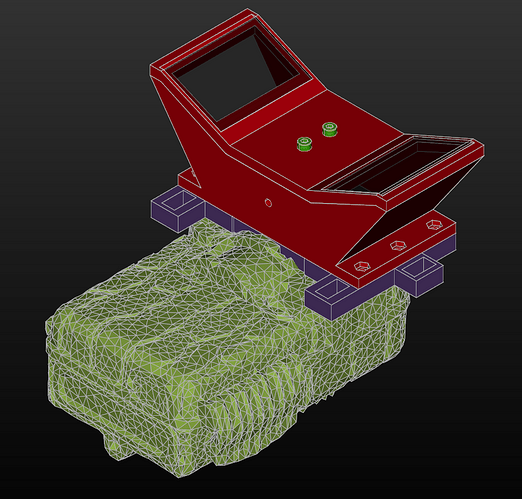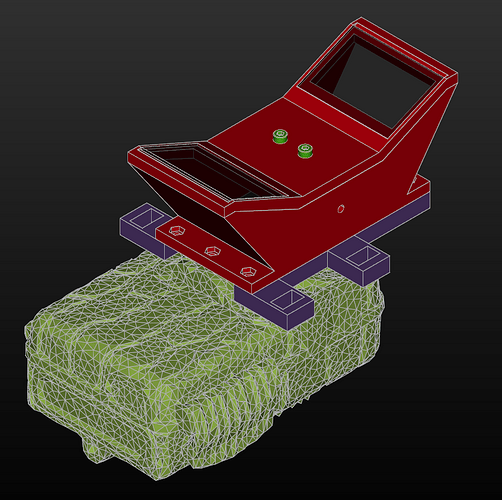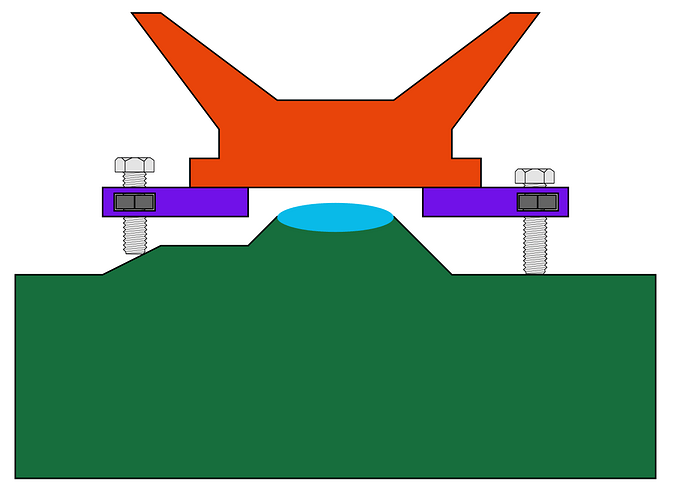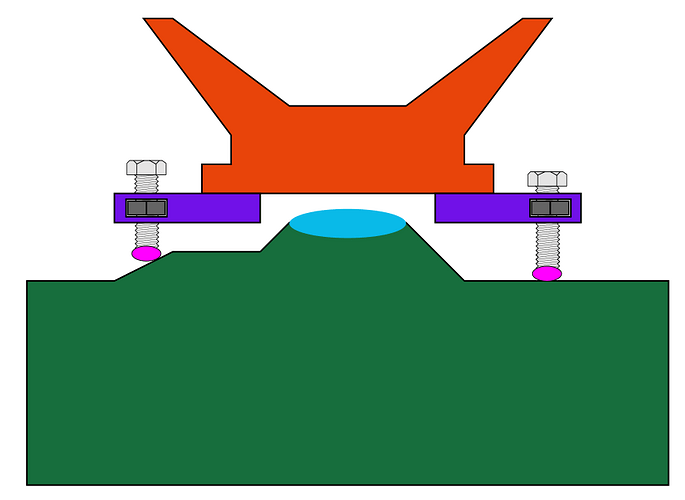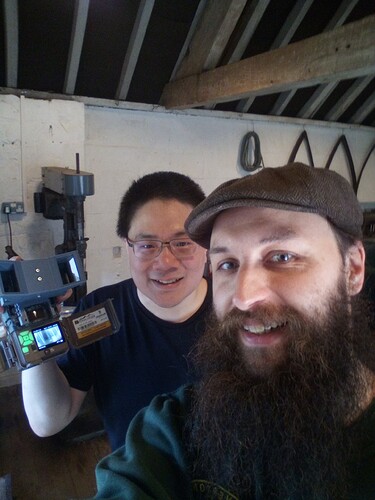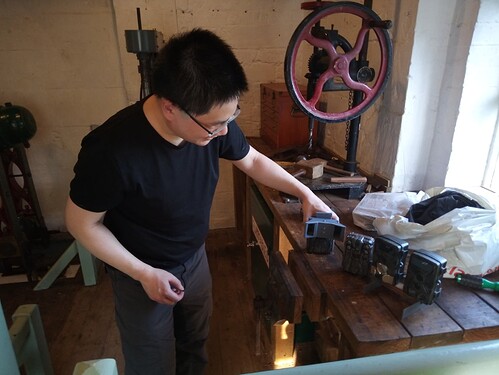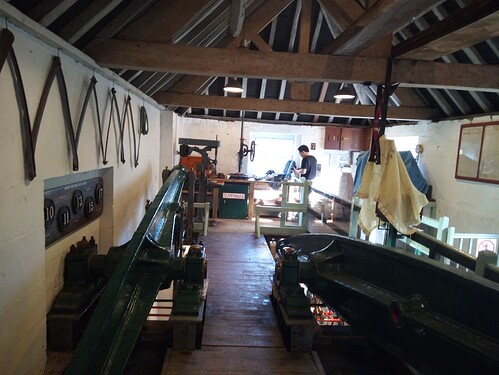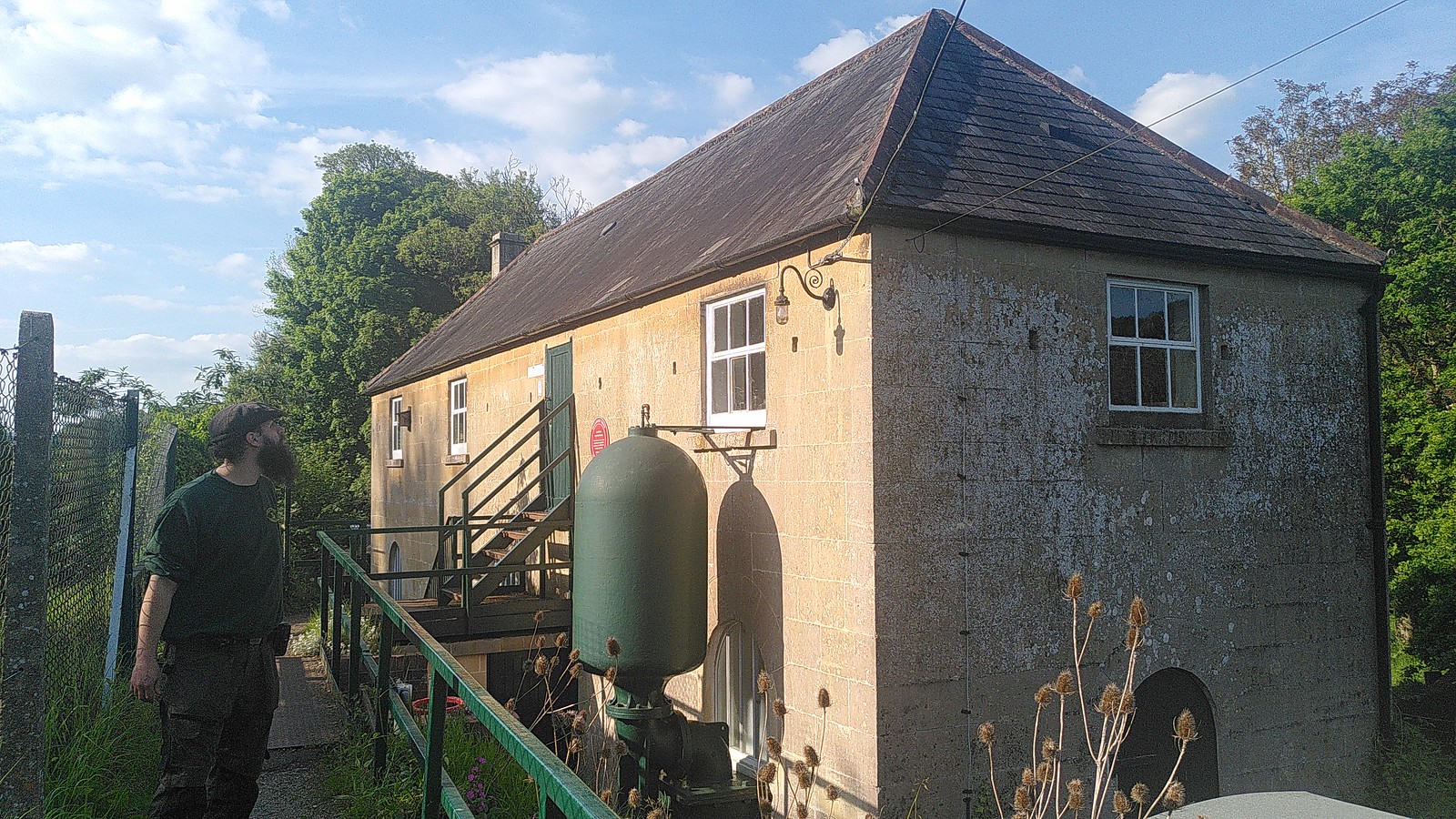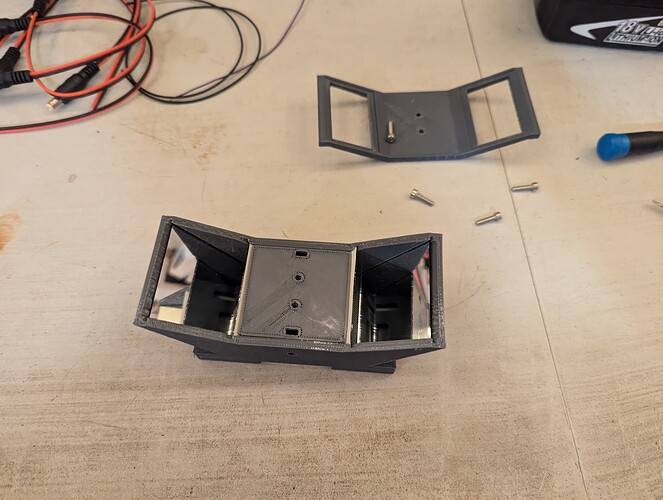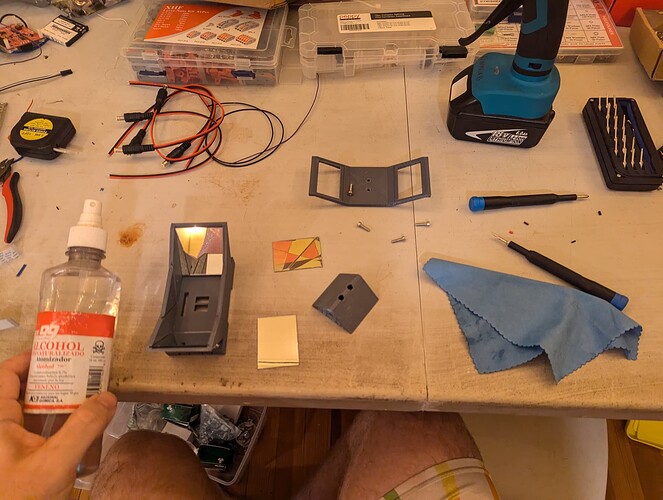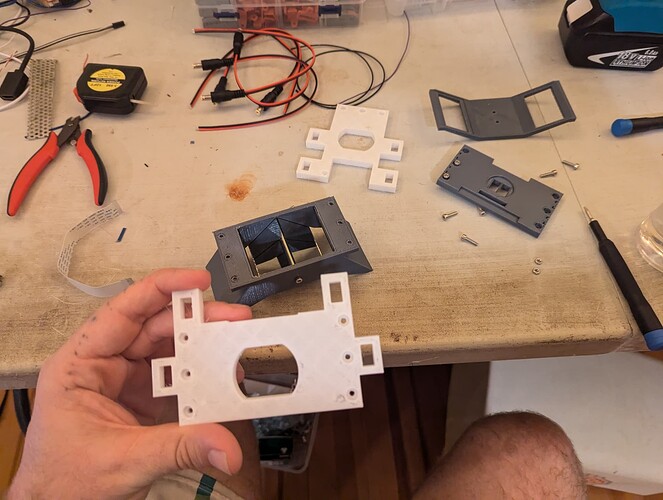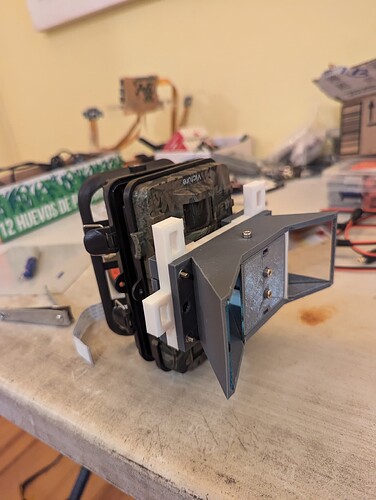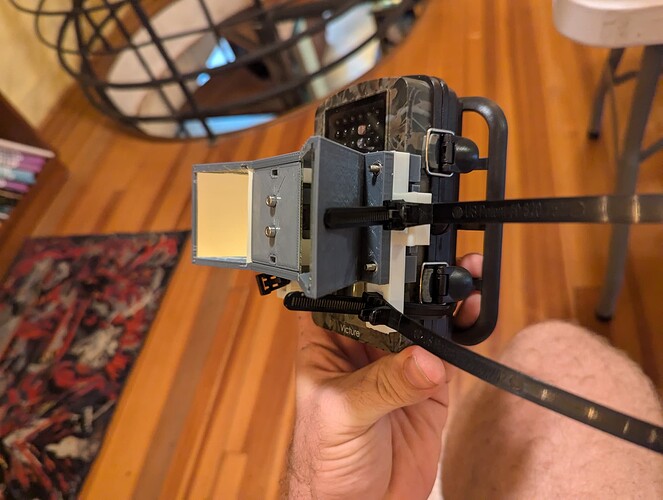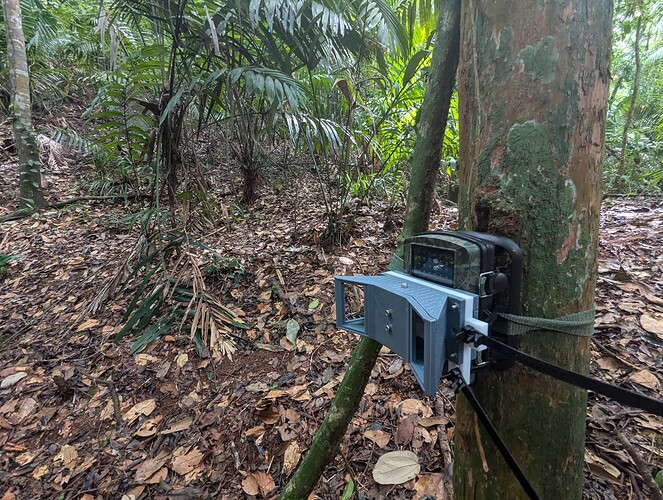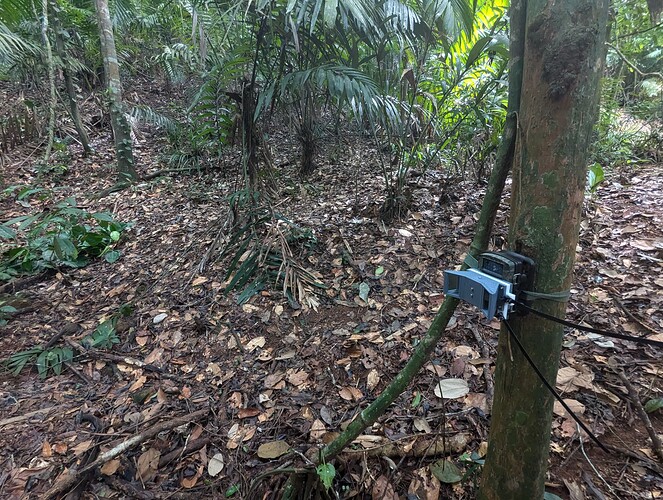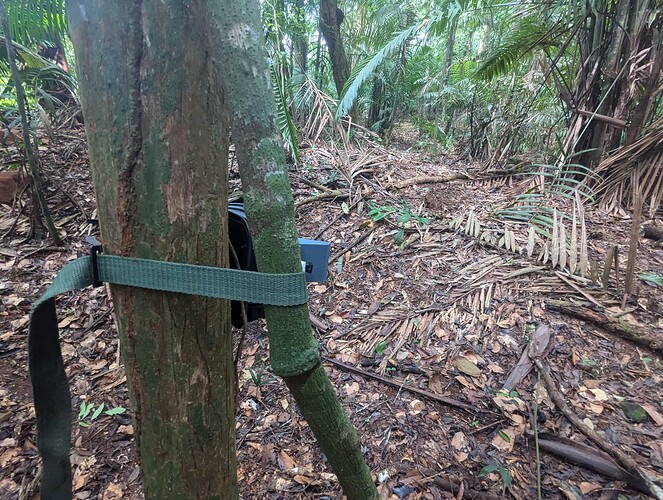The current design uses nut traps everywhere, and it would not be hard to create a shim with push-pull nut traps as you have shown in your diagrams.
The distance of the stereoscope from the camera lens is not overly critical. It seems to only change the amount of the field of view that is filled.
As far as alignment in other axes, I am going to switch to aircraft terminology because I feel it is the best way for me to explain. This diagram will help show the terminology I am using. Picture the horizontally mounted stereoscope in my image above as an airplane flying away from the lens of the camera with its wings level.
The stereoscope is very sensitive to Roll. With just a small amount, the stereo images lose a lot of the parallel alignment that I assume they need to be processed properly.
The stereoscope is somewhat sensitive to Yaw, but I think it takes more of it to cause a problem than with Roll. Interestingly, the Victure camera trap that @hikinghack has exhibits an issue where it seems to have the camera sensor mounted a degree or two off-angle, which causes a little Yaw effect with the stereoscope. I actually experimented in creating a shim that corrected for this, but eventually decided I did not have the time to keep experimenting with it. Having adjustment screws would allow things like this to be compensated for.
The stereoscope is probably least sensitive to Pitch, with Roll and Yaw being more critical.
So having screw jacks like you have pictured might allow for a generic shim at the expense of being more complicated to adjust properly.
Camera traps vary so greatly in configuration that on many models it will be hard/impossible to eliminate the gap between the camera trap and the stereoscope. In my testing, light leak in that gap can cause problems with the images. That is just anecdotal though, I never did any testing specifically on this. I am still not clear on whether or not these stereoscopes need to be sealed, or just cleaned periodically. I did not glue the clear lens covers in the stereoscopes that @hpy and @hikinghack have for that reason. Maybe testing can be done to see how much those gaps really affect image quality, and how likely it is for dirt and insects to foul up images.
I should also note that I hope to work on a periscope mount for the stereoscope (as suggested by @jpearce elsewhere). The problem with the current stereoscope configuration is that it will block IR emitters, PIR sensors, etc on some camera traps. I will probably also try to scale the stereoscope down again. You can see early pictures in the repository where I used 25mm mirrors instead of 50mm mirrors. This was a nice, compact design, but led to very small stereo images. My fear was that the stereo images would be too small to process properly, but that was just a guess. I need guidance from researchers on what works and what does not.
Everything in the design is up for change right now. I am hopeful that more feedback from the field will show what works and what does not, leading to a more production-ready design.
